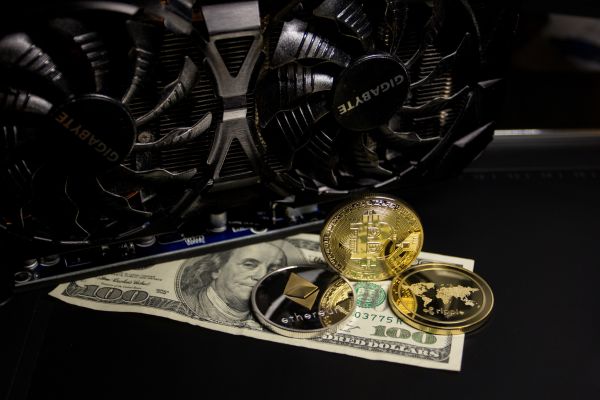Personal loans are a popular financial tool that individuals use for various purposes, such as debt consolidation, medical expenses, home renovations, or unexpected emergencies. Typically, these loans come with interest rates that add to the total repayment amount, making them more expensive over time. However, no interest personal loans offer a unique and attractive alternative for borrowers looking to avoid the financial burden of additional interest costs. This comprehensive guide will explore the concept of no interest personal loans, their types, availability, advantages, and potential drawbacks, as well as provide examples of where and how to find them.
Understanding No Interest Personal Loans
No interest personal loans, often referred to as “zero interest loans,” are exactly what they sound like: loans where the borrower is not required to pay any interest on the borrowed amount. This means that if you borrow $5,000, you will only need to repay the principal amount of $5,000, without any extra costs. These loans can be highly advantageous for individuals who want to borrow money without the added expense of interest.
However, it’s crucial to understand that no interest personal loans are not always straightforward. They come in various forms, and lenders often have specific conditions or fees that apply. For instance, a lender might offer a no interest loan with a short repayment period, late payment fees, or requirements that the loan be used for specific purposes. It’s essential to read the fine print and fully understand the terms and conditions before committing to such a loan.
Types of No Interest Personal Loans
No interest personal loans come in several varieties, each with its own set of characteristics and eligibility requirements. Here are some common types:
Promotional No Interest Loans
Some financial institutions and retailers offer promotional no interest loans as part of a marketing campaign. These loans typically come with a limited-time offer, such as “no interest for 12 months.” If the loan is paid off within the promotional period, no interest is charged. However, if the borrower fails to repay the loan in full by the end of the promotional period, interest may be applied retroactively from the date of the loan origination.
Peer-to-Peer (P2P) Loans
P2P lending platforms connect borrowers directly with individual lenders. In some cases, these platforms offer no interest loans as part of their community support initiatives or through philanthropic lenders who wish to help others without charging interest. The availability of such loans depends on the platform and the willingness of individual lenders to offer interest-free terms.
No Interest Loans from Charities and Nonprofits
Various charities and nonprofit organizations provide no interest loans to individuals in need, especially those facing financial hardship. These loans are typically aimed at helping with essential expenses, such as medical bills, education costs, or home repairs. The loan amounts are usually small, and the eligibility criteria can be strict, focusing on those who have exhausted other options.
Employer-Sponsored Loans
Some employers offer no interest loans as a benefit to their employees. These loans are usually small and are repaid through payroll deductions. They are designed to help employees cover unexpected expenses, such as medical bills or emergency repairs, without resorting to high-interest payday loans or credit cards.
Community and Religious Organization Loans
Local communities and religious organizations sometimes provide no interest loans to their members as part of their support programs. These loans are generally intended for community members facing financial difficulties or needing funds for specific purposes, such as education, business startups, or housing.
No Interest Credit Cards
While not technically a personal loan, no interest credit cards can function similarly. These cards offer a promotional period during which no interest is charged on purchases or balance transfers. If the balance is paid off before the promotional period ends, the borrower can avoid paying any interest.
Examples of No Interest Personal Loans
To give a clearer picture of what no interest personal loans might look like, here are some real-world examples of such loans offered by different institutions and organizations:
- Payday Alternative Loans (PALs) from Credit Unions: Many credit unions offer Payday Alternative Loans, which are small, short-term loans with no interest or very low interest rates. These loans are designed to help members avoid the high costs associated with traditional payday loans.
- Jewish Free Loan Association (JFLA): The JFLA offers interest-free loans to people of all backgrounds, including loans for education, medical expenses, and business startups. These loans are typically small and must be repaid within a set period.
- Islamic Finance Providers: In line with Sharia law, which prohibits charging or paying interest, some Islamic financial institutions offer no interest personal loans, known as Qard Hasan loans. These loans are often intended for community members in need and must be repaid without any additional charges.
- Mission Asset Fund (MAF): This nonprofit organization offers interest-free loans to individuals who do not have access to traditional financial services. Their loans are often used for immigration-related expenses, business development, and education.
- Family and Friends Loans: Loans from family and friends can often be interest-free, depending on the agreement made. While these are informal loans, they can serve as a source of no interest funding for personal needs.
- University-Based No Interest Loans: Some universities offer interest-free loans to students for educational expenses, with repayment terms often beginning after graduation. These loans are intended to help students cover tuition, books, and other academic costs without the burden of interest.
- Employer-Sponsored Emergency Loans: Some companies provide their employees with no interest emergency loans for urgent needs like medical bills, car repairs, or relocation expenses. These loans are typically small and repaid through payroll deductions.
- Disaster Relief Loans from Nonprofits: In times of natural disasters, certain nonprofit organizations offer no interest loans to affected individuals to help them rebuild or cover essential expenses. These loans are usually targeted at those who have suffered significant losses and need immediate financial assistance.
- Kiva Microloans: Kiva, a global nonprofit, allows individuals to lend money to entrepreneurs around the world at zero interest. While these loans are often used for business purposes, they can also be a source of no interest funding for personal needs in certain cases.
- Interest-Free Loan Societies: Some communities have established interest-free loan societies that provide small loans to members for specific needs, such as home repairs, medical expenses, or starting a small business. These societies are often based on community contributions and repay the loans through a mutual aid system.
Advantages of No Interest Personal Loans
No interest personal loans offer several advantages that make them an appealing option for those in need of financial assistance:
Cost Savings: The most significant advantage of no interest personal loans is the cost savings. Without the burden of interest, borrowers only need to repay the principal amount, making these loans much more affordable than traditional personal loans or credit cards.
Predictable Repayments: Since no interest is charged, borrowers have a clear picture of their repayment obligations from the outset. This predictability makes it easier to budget and plan for loan repayment.
Access to Affordable Credit: For individuals who might not qualify for traditional loans due to poor credit history or low income, no interest loans from nonprofits or community organizations can provide access to necessary funds without the risk of predatory lending practices.
Support During Financial Hardship: No interest personal loans are often available to those facing financial hardship, offering a lifeline in times of need. These loans can be used for essential expenses, such as medical bills or home repairs, without adding to financial stress.
Community Support: Many no interest loans are offered through community or religious organizations, which can foster a sense of support and solidarity. Borrowers may feel more comfortable seeking help from these sources than from traditional lenders.
Potential Drawbacks of No Interest Personal Loans
While no interest personal loans have clear benefits, there are also potential drawbacks to consider:
Limited Availability: No interest loans are not as widely available as traditional loans, and they often come with specific eligibility requirements. Borrowers may need to meet strict criteria, such as income limits or community membership, to qualify.
Small Loan Amounts: These loans are typically smaller than conventional loans, which may not be sufficient for significant expenses, such as buying a car or funding a major home renovation.
Short Repayment Terms: No interest personal loans often have shorter repayment terms, which can result in higher monthly payments. Borrowers need to be sure they can meet these payments to avoid defaulting on the loan.
Potential Fees: Some no interest loans come with fees, such as origination fees, application fees, or late payment penalties. While these fees are usually lower than interest charges, they can still add to the overall cost of the loan.
Risk of Retroactive Interest: In the case of promotional no interest loans, failing to repay the loan in full by the end of the promotional period can result in retroactive interest charges. Borrowers must be diligent in meeting repayment deadlines to avoid this pitfall.
Alternatives to No Interest Personal Loans
If no interest personal loans are not available or suitable for your needs, there are other low-cost alternatives to consider:
Low-Interest Personal Loans: Some financial institutions offer personal loans with low interest rates to borrowers with good credit. These loans may not be interest-free, but they can be more affordable than high-interest alternatives.
Credit Union Loans: Credit unions often provide personal loans with lower interest rates and more favorable terms than traditional banks. They may also offer small, short-term loans designed to help members avoid payday loans.
Zero Interest Credit Card Promotions: Many credit cards offer zero interest on purchases or balance transfers for an introductory period, usually ranging from 6 to 18 months. If the balance is paid off within this period, no interest is charged.
Payment Plans: For certain expenses, such as medical bills or large purchases, negotiating a payment plan with no interest directly with the provider can be an effective way to manage costs without incurring interest.
Personal Savings: Using personal savings or emergency funds can be a preferable option to borrowing. While it may deplete savings, it avoids the need for loan repayment altogether.
Conclusion
No interest personal loans can be an excellent financial tool for those looking to borrow money without the added burden of interest charges. They come in various forms, from promotional offers and employer-sponsored programs to nonprofit loans and community-based initiatives. While they offer significant advantages, such as cost savings and predictable repayments, they also have potential drawbacks, including limited availability and small loan amounts.
For individuals considering a no interest personal loan, it is crucial to carefully review the terms and conditions, understand the repayment requirements, and ensure the loan meets their financial needs. By exploring all available options and considering alternatives, borrowers can make an informed decision that supports their financial well-being.








Leave a Comment